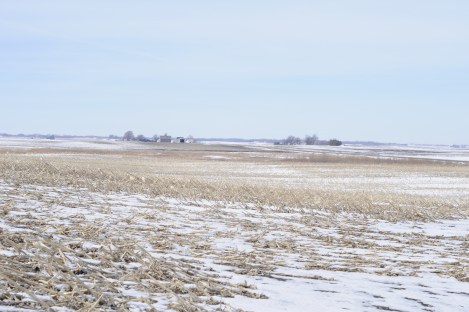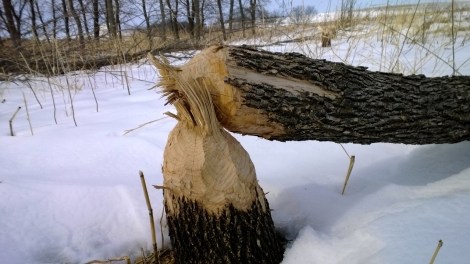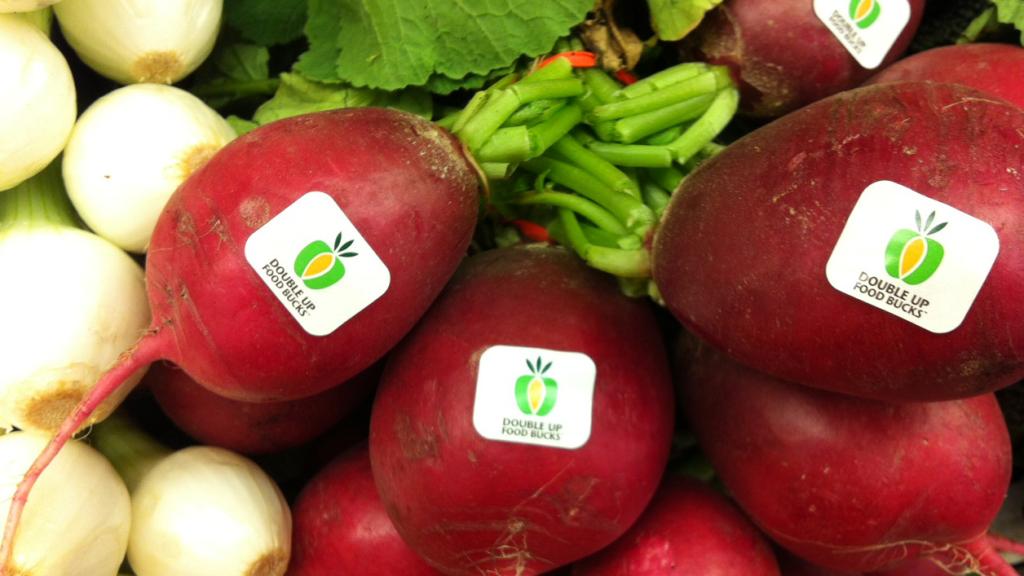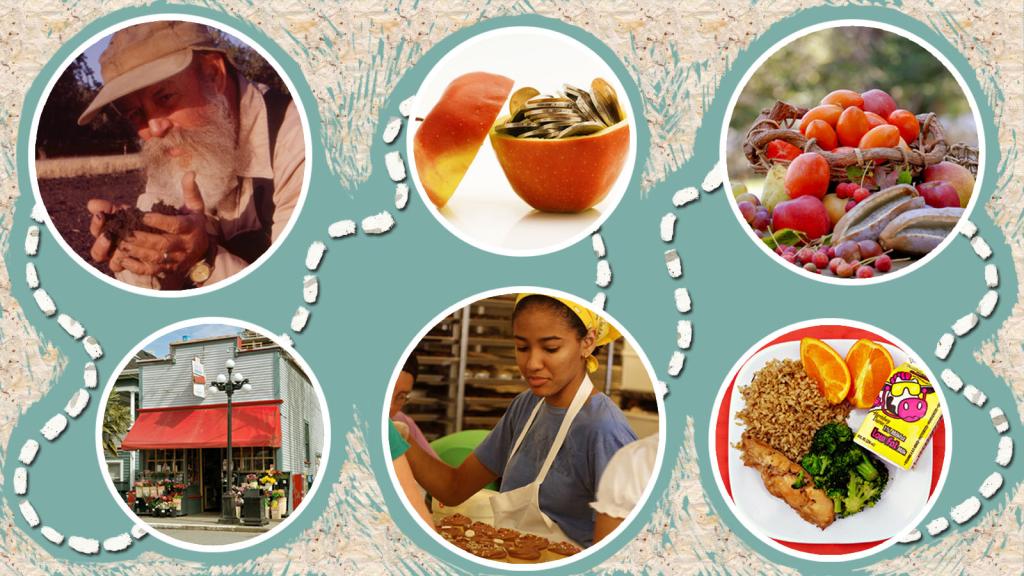In writing about the next steps needed to build a more sustainable food system, I’ve been focusing on local and regional agriculture. But if we’re interested in sustainability, we should also be interested conventional farming. Because conventional ag is conventional — that is, the norm — improvements there have a big and immediate effect. So when the Iowa Soybean Association invited me to come talk with farmers in Des Moines, I got on a plane to see what people in that part of the world were doing to improve the environment.
On my first day in Iowa, I drove to the small town of Jefferson to meet David Ausberger, who has taken a special interest in conservation. Ausberger met me at the door of his three-story Victorian with a pair of ski pants and a bulky Carhartt jacket to supplement my thin California layers.
Ausberger grew up on the farm, but he had no obvious affinity for farming. “I was never one of those guys wearing seed-corn hats and playing with tractors,” he told me, as we rumbled out of town in his big black truck, between fields of broken cornstalks patched with snow.
Instead, Ausberger studied journalism and became the mascot at the University of Iowa. But when he eventually found himself back on the family farm, he found the work suited him. After talking with him for a day, I could see he has an unusual approach to problem solving. Instead of rolling up his shirt sleeves and approaching a problem head on, his tendency is to step back, look and the big picture, and see if there isn’t some way to sneak up on the quandary from the side.
“A lot of farmers have the blinders on, just thinking ‘Yield, yield, yield,’” he said as we drove further out of town. “And it’s great going to the bar or coffee shop and talking about your yield. But my banker has got me trained to talk about profits.”
If, instead of fixating on yield, you start thinking holistically about turning a profit, conservation can become an ally rather than an afterthought. Conservation, after all, means less waste: less soil flowing downstream, less petroleum burned, fewer costly pesticides sprayed. All that rhymes with profits.
Ausberger motioned toward his window. “The guy in the house we just passed? Well, he’s kind of a friend of mine, and he’s one of these guys that’s really into big equipment. You know, tractors with three giant wheels on each side of one axle.” Those big tractors come in handy if you are plowing aggressively, but they are expensive, and burn a lot of fuel.
It’s the opposite of Ausberger’s approach: He shoestrings his operation along with smaller, used equipment. And he tries not to disturb the soil at all. He doesn’t just practice no-till farming; he aims for never-till farming, allowing the natural soil biota to build up over the years and form complex communities.
Ausberger is an exemplar of conservation — he just won a national award for stewardship — but he’s not an aberration. U.S. farmers have overwhelmingly begun to do some form of conservation tillage. Farm magazines have adopted the phrase the “Brown Revolution” to describe the new focus on soil health.
In the old days farmers used moldboard plows to turn the ground upside down, providing a clean slate for planting. Few people do this any more, because it makes it too easy for loose dirt to blow, or wash, away. Instead, most farmers practice some form of conservation tillage.
We could see the alternatives in the winter fields around us. In some, the ground was mostly black, but thickly strewn with vegetable detritus: Farmers had made a pass with the tractor to rip up the last crop, but left the detritus on the surface to stabilize the soil. In other fields that hadn’t been tilled at all, a stubble of corn stalks rose above the snow. To my eye, there was something more aesthetically pleasing about these golden winter fields: They looked more hospitable to life. A lot of that life, Ausberger said, is underground.

One of Ausberger’s “never-till” fields.
“Even though this looks static, like there’s nothing going on out there, beneath the surface there is something going on. All winter long, I’ve got worms and microbes preparing for the planting season.” He recalls seeing one estimate that untilled fields contain 30 million earthworms per acre, versus 3 million in the plowed soil.
We pulled up to a shed, about the size of a basketball court, where Ausberger keeps some machinery. The walls are thickly insulated, and solar panels on the roof provide the electricity. We climbed into a green and black four-wheeler and raced out into the fields.
The ground between the rows was covered in layers of vegetable matter — it was hard to find a bare spot. Ausberger finds that the standing cornstalks catch the snow, and their intact root systems slow the percolation of the melt water. That’s fantastic in a drought year, but often the problem in Iowa is just the opposite: Things are too wet. Still, Ausberger says that no-till may have an edge. Because he makes few passes over the fields, he doesn’t have a layer of compacted clay holding water near the surface. His fields do hold water longer, but the water is distributed more evenly.
“When everything is perking along just right and you go out into the field, it feels like you are walking on a plate of brownies,” he said.
Next, we were zipping down a back road at 40 miles an hour, and the wind was whipping through the cab in a way that was, shall we say, novel for a California boy. (I didn’t cry — it’s just that the wind was streaming in behind my glasses in a way that made my eyes water uncontrollably.)
We turned off, and Ausberger barely slowed as we crashed through snowdrifts, over a ridge, and onto another field. The far end was thickly forested.
“I just wanted to show you this,” he said. “It’s not like we just started thinking about conservation.” For years the family has been planting trees along the creek here. It’s home to deer, pheasants, and songbirds, and we saw unmistakable evidence of beaver. People come to ride their horses or snowmobiles. It’s beautiful.
“This is where my father wants his ashes scattered,” Ausberger said. “It’s where I used to bring my girlfriends from college for a secluded picnic.”
Woodlands create habitat, and beavers create wetlands, which filter water and remove excess nitrogen. Still, sometimes weather can trump all these improvements. Last year, a drought kept plants from growing and sucking up nitrogen, and then heavy rains flushed that fertilizer into waterways, resulting in the worst nitrate pollution that downstream Des Moines has ever experienced. Extreme weather is becoming the new normal, Ausberger said, which means farmers have to work even harder to figure out conservation practices.
“Bill Stowe [head of Des Moines Water Works] wants me to keep my nitrogen out of the river, and I agree with him,” Ausberger said. “I want to do my part. And I paid for that nitrogen in the form of turkey manure compost. I want to use every bit of it.”
There was one final field to see, where Ausberger has planted cereal rye to grow over winter. Amazingly, beneath the snow were pale green grass stems. Cover crops like this can lay claim to excess nitrogen and keep it out of the waterways. The rye also releases chemicals into the soil as it grows that keep weeds from germinating. It’s a good deal, but Ausberger says he hasn’t mastered the technique. It’s hard to grow cover crops this far north, but he predicts that farmers will figure it out, as more begin to experiment.
As we headed back in his blessedly warm truck, I told Ausberger that many people from my (coastal) part of the world would have little enthusiasm for what he was doing. He is optimizing his farming, but some would contend that he’s optimizing while headed in fundamentally the wrong direction: In the end, he’s still growing crops that primarily go to feed animals and fuel cars, instead of simply feeding people.
We talked about this for a while, and I’ll summarize his response in a couple of points. First, it’s important to grow plants suited to the region, that don’t suck up extra resources. Corn and soy happen to grow amazingly well in Iowa. Second, farmers don’t control the ways their crops are used: If there’s a growing market for tofu and a shrinking market for beef, perhaps Ausberger’s production would look more sustainable.
I’d add a third point: Ausberger is green in the same way a Prius is green. A Prius is optimized for conservation, but you could also argue that it’s still a fossil-fuel burning part of the problem. Nonetheless, until we build compact, bike-centric cities, I’m pretty glad people are buying hybrid cars. In the same way, I’m glad that farmers like Ausberger are around.
Read more in the series “Local food, for real”



